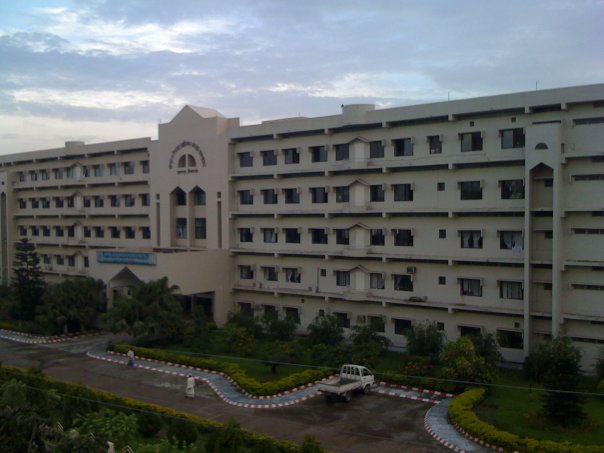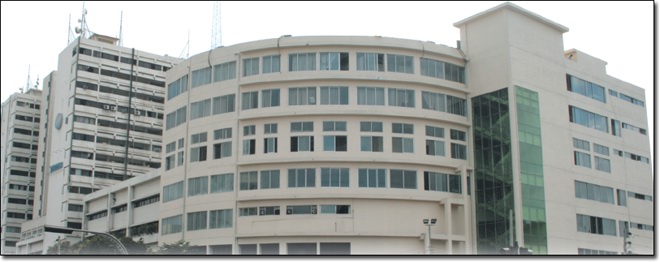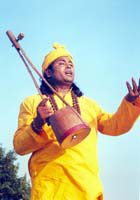
Fitness and Exercise is very important in regular life. We can be
healthy if we can do exercise regularly. This way we can lead healthy
life. BDhealth.com realizes the issues and has taken a close look to
that. In this section you will find some Fitness and Exercise articles.
To facilate this BD Health introduces search facility of Fitness and
Exercise articles that will let you reach the proper section or area of
your interest when you need it. If you feel interested writing to this
section then post your article at articles@bdhealth.com. Please mention
the subject with “Article: Fitness and Exercise”. Please send your
feedback toward us. Your feedback will make us deliver better service.

Although Bangladesh had a basic health care infrastructure in the 1980s,
much remained to be done, particularly in rural areas, where the
majority of the people faced critical health problems. The main dangers
to health in the late 1980s were much the same as they were at the time
of independence. The incidence of communicable disease was extensive,
and there was widespread malnutrition, inadequate sewage disposal, and
inadequate supplies of safe drinking water. The fertility rate was also
extremely high. Only 30 percent of the population had access to primary
health care services, and overall health care performance remained
unacceptably low by all conventional measurements. Life expectancy at
birth in FY 1985, according to official Bangladesh statistics was
estimated at 55.1 years, as opposed to 61 years in comparable developing
countries. Morbidity and mortality rates for women and children were
high. Infant mortality rates exceeded 125 deaths per 1,000 live births,
the maternal mortality rate was 6 per 1,000 live births, and 56.1
percent of infants suffered from chronic malnutrition. More than 45
percent of rural families and 76 percent of urban families were below
the acceptable caloric intake level. About two-thirds of all families
received insufficient protein and vitamins.

Health and education levels remain relatively low, although they have
improved recently as poverty (31% at 2010)
levels have decreased. Most Bangladeshis continue to live on
subsistence farming in rural villages. For those in rural areas, village
doctors with little or no formal training constitute 62% of the
healthcare providers practising modern medicine and the formally trained
providers are occupying a mere 4% of the total health workforce. The
health seeking pattern of the villagers show that nearly 70% of the
patients who consulted a healthcare provider for curative services,
contacted a village doctor. Showing clearly that village doctors are a
major player in the healthcare system.
As such, health problems abound, springing from poor water quality and
prevalence of infectious diseases. The water crisis is acute, with
widespread bacterial contamination of surface
water and arsenic contamination of
groundwater.
Common diseases such as Malaria, Leptospirosis
and dengue were rampant in Bangladesh. In 2009, deaths due to
Tuberculosis amongst the HIV-negative was 51 per 100 000 population, and
prevalence of Tuberculosis was 425 per 100 000 population. The case
detection rate for all forms of Tuberculosis is at 44% in 2009.
Moreover, the number of cases of Malaria reported in 2009 was 79853 and
cases of Leprosy reported was 5239 in 2009 and 3848 in 2010.
The poor health conditions in Bangladesh is attributed by the lack of
healthcare and services provision by the government. The total
expenditure on healthcare as a percentage of their GDP was only 3.35% in
2009, according to a World Bank report published in 2010.
The number of hospital beds per 10 000 population is 4.
The General government expenditure on healthcare as a percentage of
total government expenditure was only 7.9% as of 2009 and the citizens
pay most of their health care bills as the out-of-pocket expenditure as a
percentage of private expenditure on health is 96.5%.
Health Care Facilities

The Ministry of Health and Family Planning was responsible for
developing, coordinating, and implementing the national health and
mother-and-child health care programs. Population control also was
within the purview of the ministry. The government's policy objectives
in the health care sector were to provide a minimum level of health care
services for all, primarily through the construction of health
facilities in rural areas and the training of health care workers. The
strategy of universal health care by the year 2000 had become accepted,
and government efforts toward infrastructure development included the
widespread construction of rural hospitals, dispensaries, and clinics
for outpatient care. Program implementation, however, was limited by
severe financial constraints, insufficient program management and
supervision, personnel shortages, inadequate staff performance, and
insufficient numbers of buildings, equipment, and supplies.
In the
late 1980s, government health care facilities in rural areas consisted
of subdistrict health centers, union-level health and family welfare
centers, and rural dispensaries. A subdistrict health center in the
mid-1980s typically had a thirty-one-bed hospital, an outpatient
service, and a home-service unit staffed with field workers. Some of the
services, however, were largely nonoperative because of staffing
problems and a lack of support services. Health services in urban areas
also were inadequate, and their coverage seemed to be deteriorating. In
many urban areas, nongovernment organizations provide the bulk of urban
health care services. Programming and priorities of the nongovernment
organizations were at best loosely coordinated.
A union-level
health and family welfare center provided the first contact between the
people and the health care system and was the nucleus of primary health
care delivery. As of 1985 there were 341 functional subdistrict health
centers, 1,275 rural dispensaries (to be converted to union-level health
and family welfare centers), and 1,054 union-level health and family
welfare centers. The total number of hospital beds at the subdistrict
level and below was 8,100.
District hospitals and some
infectious-disease and specialized hospitals constituted the second
level of referral for health care. In the mid-1980s, there were 14
general hospitals (with capacities ranging from 100 to 150 beds), 43
general district hospitals (50 beds each), 12 tuberculosis hospitals (20
to 120 beds each), and 1 mental hospital (400 beds). Besides these,
there were thirty-eight urban outpatient clinics, forty-four
tuberculosis clinics, and twenty-three school health clinics. Ten
medical college hospitals and eight postgraduate specialized institutes
with attached hospitals constituted the third level of health care.
In
the mid-1980s, of the country's 21,637 hospital beds, about 85 percent
belonged to the government health services. There was only about one
hospital bed for every 3,600 people. In spite of government plans, the
gap between rural and urban areas in the availability of medical
facilities and personnel remained wide. During the monsoon season and
other recurrent natural disasters, the already meager services for the
rural population were severely disrupted.
Disease and malnutrition
Child malnutrition in Bangladesh is amongst the highest in the world.
Two-thirds of the children, under the age of five, are under-nourished
and about 60% of them, who are under six, are stunted.
More than 45 percent of rural families and 76 percent of urban families
were below the acceptable caloric intake level.
Malnutrition is passed on through generations as malnourished mothers
give birth to malnourished children. According to the World Bank, about
one-third of babies in Bangladesh are born with low birth weight,
increasing infant mortality rate, and leads to increasing risk of
diabetes and heart aliments in adulthood.
According to UNICEF, one neonate dies in Bangladesh every three to four
minutes; 120 000 neonates die every year.
Malnutrition in Bangladesh
Malnutrition in Bangladesh has been a persistent problem for
the poverty-stricken country. The World
Bank estimates that Bangladesh is ranked 1st in the world of the
number of children suffering from malnutrition
In Bangladesh, 26% of the population are undernourished
and 46% of the children suffers from moderate to severe underweight
problem.
43% of children under 5 years old are stunted. One in five preschool
age children are vitamin A deficient and one in two are anemic.
Causes of malnutrition
Most terrain of Bangladesh is low-lying and is prone to flooding. A
large population of the country lives in areas that are at risk of
experiencing extreme annual flooding that brings large destruction to
the crops.
Every year, 20% to 30% of Bangladesh is flooded.
Floods threaten food security and their effects on agricultural
production cause food shortage.The health and sanitation environment also affects malnutrition.
Inadequacies in water supply, hygiene and sanitation have direct
impacts on infectious diseases, such as malaria, parasitic diseases, and
schistosomiasis. People are exposed to both
water scarcity and poor water quality. Groundwater is often found to
contain high arsenic concentration.
Sanitation coverage in rural areas was only 35% in 1995.
Almost one in three people in Bangladesh defecates in the open among
the poorest families. Only 32% of the latrines in rural areas attain the
international standards for a sanitary latrine. People are exposed to
feces in their environment daily.
The immune system falls and the disease processes exacerbate loss of
nutrients, which worsens malnutrition.
The diseases also contribute through the loss of appetite, lowered
absorption of vitamins and nutrients, and loss of nutrients through
diarrhea or vomiting.
Unemployment and job problems also lead to malnutrition in
Bangladesh. In 2010, the unemployment rate was 5.1%.
People do not have working facilities all year round
and they are unable to afford the minimum cost of a nutritious diet due
to the unsteady income.
Effects of malnutrition in Bangladesh
Health effects
Undernourished mothers often give birth to infants who will have
difficulty growing up and developing into a healthy teenager. They
develop health problems such as wasting, stunting, underweight, anemia,
night blindness and iodine deficiency.
As a result, Bangladesh has a high child mortality rate and is ranked
57 in the under-5 mortality rank.
Economic effects
As 40% of the population in Bangladesh are children,
malnutrition and its health effects among children can potentially lead
to a lower educational attainment rate. Only 50% of an age group of
children in Bangladesh managed to enroll into secondary school
education.
This would result in a low-skilled and low productivity workforce which
would affect the economic growth rate of Bangladesh with only 3% GDP
growth in 2009.
Efforts to combat malnutrition
Many programmes and efforts have been implemented to solve the
problem of malnutrition in Bangladesh. UNICEF
together with the government of Bangladesh and many other NGOs such as Helen Keller International, focus
on improving the nutritional access of the population throughout their
life-cycle from infants to the child-bearing mother.
The impacts of the intervention are significant. Night blindness has
reduced from 3.76% to 0.04% and iodine-deficiency among school-aged
children has decreased from 42.5% to 33.8%.
Maternal and child health
One in eight women receive delivery care from medically trained
providers and fewer than half of all pregnant women in Bangladesh seek
ante-natal care. Inequity in maternity care is significantly reduced by
ensuring the accessibility of heath services.
In June 2011, the United Nations Population Fund
released a report on The
State of the World's Midwifery. It contained new data on the
midwifery workforce and policies relating to newborn and maternal
mortality for 58 countries. The 2010 maternal mortality rate per 100,000
births for Bangladesh is 340. This is compared with 338.3 in 2008 and
724.4 in 1990. The under 5 mortality rate, per 1,000 births is 55 and
the neonatal mortality as a percentage of under 5's mortality is 57. The
aim of this report is to highlight ways in which the Millennium Development Goals
can be achieved, particularly Goal 4 – Reduce child mortality and Goal 5
– improve maternal health. In Bangladesh the number of midwives per
1,000 live births is 8 and 1 in 110 shows us the lifetime risk of death
for pregnant women.
Medical Education and Training

In 1986 Bangladesh had about 16,000 physicians, 6,900 nurses, 5,200
midwives, and 1,580 "lady health visitors," all registered by the
government. The annual output of new physicians (both graduate and
postgraduate) and dentists, despite some annual fluctuations, helped
improve health care in the 1978-86 period. In 1978 there were 822
graduates. A high of 1,848 was reached in 1982, but the number of
graduates slumped to 985 in 1986.
Medical education and training
was provided by ten medical colleges and eight postgraduate specialized
medical institutes. One dental college, twenty-one nursing institutes,
eight medical assistant training schools, and two paramedical institutes
trained ancillary medical personnel. The quality of medical education
and training was considered satisfactory by observers. The Third
FiveYear Plan incorporated several measures to expand facilities for the
training of specialists and for in-service training of health
administrators in management skills. For example, eight fieldtraining
subdistrict health complexes had been developed to impart education and
training in community medicine. Schemes for improving education in
indigenous systems of medicine were taken up, and their implementation
was continued as the 1990s approached. The general shortage of
physicians and nurses was aggravated by their emigration to the oil-rich
countries of the Middle East and to the industrialized countries of the
West. Immediately after independence, about 50 percent of the medical
graduates sought employment abroad; this trend was later arrested, but
special incentives had to be provided to keep medical professionals in
the country.
Medicinal Drugs and Drug Policy

The per capita consumption of Western drugs in Bangladesh was about
US$1 per year in the late 1980s. According to a government statement in
1982, although most people had no access to lifesaving drugs, a large
number of wasteful and undesirable medicinal products were manufactured
and marketed mostly under commercial pressure. A national drug policy
promulgated in 1982 was aimed at simplifying the range of drugs
available and at improving the logistics of drug distribution at
reasonable prices. The policy identified sixteen guidelines for the
evaluation of medicinal products for the purpose of registration. The
registration of more than 1,700 products was canceled and these were
gradually withdrawn from use. Unani, ayurvedic, and
other homeopathic medicines were also brought under this policy.
Under
the new policy, in order to promote local enterprise, foreign companies
were no longer allowed to manufacture antacid and vitamin preparations.
The policy identified 150 essential drugs for therapeutic purposes.
Attempts to increase local production of drugs continued, and the
government provided Bangladeshi firms with generous industrial loans and
other assistance. Some essential drugs were also being manufactured at
government plants. As the 1980s came to a close, Bangladeshi
society had made some remarkable advances in social development,
education, and health care. Severe national disasters, however, in
addition to political discontent, contributed to the negation of any net
advances. Ever optimistic, Bangladeshis continued their age-old
struggle against the land and sought ways to accommodate the burgeoning
society.
List of medical colleges in Bangladesh

Government medical colleges

- Dhaka Medical College
- Sir Salimullah Medical College
- Mymensingh Medical College
- Chittagong Medical College
- Rajshahi Medical College
- MAG Osmani Medical College
- Sher-E-Bangla Medical College
- Shaheed Suhrawardy Medical College
- Comilla Medical College
- Khulna Medical College
- Shaheed Ziaur Rahman Medical College
- Rangpur Medical College,
- Dinajpur Medical College
- Faridpur Medical College
- Pabna Medical College
- Armed Forces Medical College, Dhaka, Bangladesh
- Noakhali Medical College
- Cox's Bazar Medical College
- Jessore Medical College
- Shahid Syed Nazrul Islam Medical College, Kishoreganj
- Kushtia Medical College
- Satkhira Medical College
- Sheikh Sayera Khatun Medical College, Gopalganj
- Kalihati Medical College, Tangail
- Govt. Homeopathic Medical College
- Govt. Unani and Ayurvedic Medical College
Private medical colleges

- Abdul Kuddus Homoeopathic Medical College, Kishoreganj
- Faridpur Homoeopathic Medical College,Faridpur
- Gono Bishwabidyalay, Savar, Dhaka
- Ad-din Womens Medical College, Dhaka
- Anwer Khan Modern Medical College, Dhaka
- Bangladesh Medical College
- Barind Medical College, Rajshahi
- BGC Trust Medical College, Chittagong
- Central Medical College, Comilla
- Chottagram Ma-O-Shishu Hospital Medical College
- Community Based Medical College (cbmc), Mymensingh
- Community Medical College, Dhaka
- Dr. Sirajul Islam Medical College, Moghbazar, Dhaka
- Delta Medical College, Dhaka
- Dhaka National Medical College
- Durra Samad Rahman Red Crescent Women’s Medical College, Sylhet (currently not operating)
- Eastern Medical College, Comilla
- Enam Medical College, Savar, Dhaka
- Sylhet Women's Medical College, Sylhet
- Green Life Medical College,Dhaka
- Holy Family Red Crescent Medical College, Dhaka
- Ibrahim Medical College, Dhaka
- Ibn Sina Medical College, Dhaka
- International Medical College, Gazipur
- Islami Bank Medical College, Rajshahi
- Jahurul Islam Medical College, Kishoregonj
- Jalalabad Ragib-Rabeya Medical College Sylhet
- Khawja Yunus Ali Medical College, Sirajganj
- Kumudini Medical College, Tangail
- Labaid Medical College[9] Dhanmondi, Dhaka(currently not operating)
- Mainamoti Medical College & Hospital,Comilla
- Maulana Bhasani Medical College
- Marks Medical College and Hospital, Phone No: 029871527, 9872241, 8033373, Dhaka
- Medical College for Women and Hospital, Dhaka
- Nightingale Medical College, Dhaka
- North Bengal Medical College, Sirajganj
- North East Medical College, Sylhet
- Northern International Medical College, Dhaka
- Northern Private Medical College, Rangpur
- Popular Medical College & Hospital, Dhaka, Bangladesh.
- Prime Medical College, Rangpur
- Rangpur Community Medical College, Rangpur
- Sahabuddin Medical College and Hospital
- Samaj Vittik Medical College, Mirzanagar, Savar, dhaka-1344
- Shahabuddin Medical College, Dhaka
- Z. H. Sikder Women’s Medical College
- Southern Medical College, Chittagong
- Tairunnessa Memorial Medical College, Gazipur
- TMSS Medical College, Bogra
- University Of Science and Technology Chittagong.IAMS
- Uttara Adhunik Medical College, Dhaka
- Saphena Women's Dental College & Hospital, Malibagh, Dhaka
Private Medical Colleges of Bangladesh
| SL | Medical Colleges Name | Phone | District |
| 1 | Ad-din Womens Medical College | 01718769874 | Dhaka |
| 2 | Anwer Khan Modern Medical College | 8614927, 8616074, 8613883, 9670295 | Dhaka |
| 3 | Ashian Medical College | 02-8999580-81, 01841-133529 | Dhaka |
| 4 | Bangladesh Islamia Eye Hospital | Dhaka | |
| 5 | Bangladesh Medical College | 02-9118202, 9120792-3, 9124619, 8115843, 8116699 | Dhaka |
| 6 | BGC Trust Medical College | 3033-56189, 56190-93 | Chittagong |
| 7 | Central Medical College | 081-71298, 68921 | Comilla |
| 8 | Chittagong Institute of Medical Technology | Khulna | |
| 9 | Christian Hospital | Bogra | |
| 10 | Community Based Medical College | 091-53594 | Mymensingh |
| 11 | Community Medical College | 9351190-1, 8314887 | Dhaka |
| 12 | CR Maternity Hospital | Chandpur | |
| 13 | Delta Medical College | 880-2-8017151-52, 880-2-8031378-79 | Dhaka |
| 14 | Dhaka National Medical College | 02 7118272, 7163853-4, 7121023-4 | Dhaka |
| 15 | East West Medical College | 8919897, 8950504,8982123 | Dhaka |
| 16 | Eastern Medical College | 081-64707, 71307 | Comilla |
| 17 | Enam Medical College | 7712424, 7711560 | Dhaka |
| 18 | Faridpur Diabetic Association Medical College | 0631-61531, 63496 | Faridpur |
| 19 | Fashion Eye Hospital Limited | 02-9343961-2 | Dhaka |
| 20 | Fatema Hospital | +63-421-66240 | Jessore |
| 21 | Green Life Medical College | 02 9612345, 8611213, 8628820-1 | Dhaka |
| 22 | Holy Family Red Crescent Medical College | 8311721-5, 8313234 | Dhaka |
| 23 | Ibn Sina Medical College | 02-9010396, 02-9005617, 02-8035905 | Dhaka |
| 24 | Ibrahim Medical College | 9663560, 9663563, 9667606 | Dhaka |
| 25 | Institute of Applied Health Sciences (USTC) | 031 659069-71, 031 659593-94 | Chittagong |
| 26 | International Medical College | 9814713, 9814714, 9814550 | Gazipur |
| 27 | Islami Bank Medical College | 88-0721-862240, 861401, 861425 | Rajshahi |
| 28 | Jahurul Islam Medical College | 09423-64209, 09423- 64315 | Kishoreganj |
| 29 | Jalalabad Ragib-Rabeya Medical College | 0821–719090–6 | Sylhet |
| 30 | Khawja Yunus Ali Medical College | 80 751 63761-3, 880 2 8128643 | Sirajganj |
| 31 | Kumudini Hospital | Tangail | |
| 32 | Kumudini Medical College | 037996- 88154, 88014 | Tangail |
| 33 | Lab Aid Medical College & Hospital | 880-2-8610793-8, 9670210-3 | Dhaka |
| 34 | Medical College for Women and Hospital | 088-02-8913939 | Dhaka |
| 35 | Memon Hospital | Chittagong | |
| 36 | National Heart Foundation | 02-8061314-6, 02-8053935-6 | Dhaka |
| 37 | Newlab Institute of Medical Technology | 01912-097640, 01911-780641 | Dhaka |
| 38 | Nightingale Medical College & Hospital | 8961628 | Dhaka |
| 39 | North Bengal Medical College | 0751-62633 | Sirajganj |
| 40 | North East Medical College | 88-0821-815632, 7244413 | Sylhet |
| 41 | Northern International Medical College | 02-9668028 | Dhaka |
| 42 | Northern Private Medical College | 0521-62612 | Rangpur |
| 43 | Prime Institute of Science & Technology | Rangpur | |
| 44 | Prime Medical College | 0521-66195, 59302 | Rangpur |
| 45 | Rangpur Community Hospital Medical College | 0521- 53880, 53882 | Rangpur |
| 46 | Samaj Vittic Medical College | 7791884, 7792224, 7792225 | Dhaka |
| 47 | Shahabuddin Medical College | 9863387-8 | Dhaka |
| 48 | SIAC Institute of Medical Technology | Dhaka | |
| 49 | SMUR Maternity Hospital | Dhaka | |
| 50 | Southern Medical College | 0443-6140249, (031) 685075 | Chittagong |
| 51 | Spark SIMT Medical Assistant Training Academy | Dhaka | |
| 52 | Sylhet Women Medical College | (0821) 28300040 | Sylhet |
| 53 | Tairunnessa Memorial Medical College (TMMC) | 9291423, 9291523 | Gazipur |
| 54 | TMSS Medical College | 051-78569 , 78975 | Bogra |
| 55 | Uttara Adhunik Medical College | 8911600, 8932330, 8932343 | Dhaka |
| 56 | Z. H. Sikder Women's Medical College | 02-811-5951, 02-8113313 | Dhaka |
Govt. Medical
Colleges
| SL | Medical Colleges Name | Phone | District |
| 1 | Armed Forces Medical College | 01775021519 | Dhaka |
| 2 | Chittagong Medical College | +88031-619400 | Chittagong |
| 3 | Comilla Medical College | 081-65562 | Comilla |
| 4 | Cox's Bazar Medical College | 0341-51300 | Cox's Bazar |
| 5 | Dhaka Medical College | 8626812-6 | Dhaka |
| 6 | Dinajpur Medical College | 0531-61787 | Dinajpur |
| 7 | Faridpur Medical College | Faridpur | |
| 8 | Gonosastho Samaj Vittik Medical College | 02-7792224, 02-7792224 | Dhaka |
| 9 | Govt. Homeopathic Medical College | 02-8959281, 02-8959282 | Dhaka |
| 10 | Jessore Medical College | Jessore | |
| 11 | Khulna Medical College | Khulna | |
| 12 | Kushtia Medical College (KMC) | Kushtia | |
| 13 | MAG Osmani Medical College | 0821-714368 | Sylhet |
| 14 | Mymensingh Medical College | 091-66063 | Mymensingh |
| 15 | Noakhali Medical College | 0321-63205, 63215 | Noakhali |
| 16 | Pabna Medical College | 0731-66231, 65332 | Pabna |
| 17 | Rajshahi Medical College | 0721-772150 | Rajshahi |
| 18 | Rangpur Medical College | 880-521-62288 | Rangpur |
| 19 | Satkhira Medical College | 88047163502 | Satkhira |
| 20 | Shaheed Suhrawardy Medical College (ShSMC) | 9130800-19 | Dhaka |
| 21 | Shaheed Ziaur Rahman Medical College | 8805169965 | Bogra |
| 22 | Shahid Syed Nazrul Islam Medical College | Kishoreganj | |
| 23 | Sheikh Sayera Khatun Medical College | Gopalganj | |
| 24 | Sher-e-Bangla Medical College (SBMC) | 0431-2173547, 01765-112001 | Barisal |
| 25 | Sir Salimullah Medical College | 7315076, 7314786 | Dhaka |


















.jpg)

